Photo Editor Mohsen Allam joins sociologist Kees Hulsman on a trip to discover Coptic villages in Egypt.
The village of Deir Al-Maymun is located on the eastern banks of the Nile, around 100 km south of Cairo. It is said that Saint Antony’s asceticism lies at the origins of the village’s founding. Local priests claim that Saint Antony chose to relocate to the village (then called Pespir) in order to isolate himself from the world. There, he spent almost 20 years weaving baskets for a living, before seeking more isolation and moving further into the mountains to the location where the Monastery of Saint Antony is now located.
Today, Deir al-Maymun is still quite isolated and boasts a predominantly Coptic population. Its approximately 500 families, almost all of whom are Christian, make it one of the few almost entirely Christian villages in the country.
[caption id="attachment_429687" align="alignnone" width="620"] Approximately 500 families, almost all of them Coptic, live in the isolated village of Deir al-Maymun.[/caption]
[caption id="attachment_429689" align="alignnone" width="620"]
Approximately 500 families, almost all of them Coptic, live in the isolated village of Deir al-Maymun.[/caption]
[caption id="attachment_429689" align="alignnone" width="620"]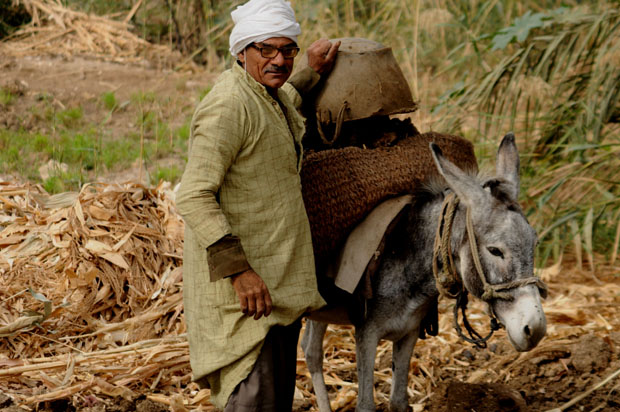 Most men in Deir Al-Maymun work in agriculture or the local quarry.[/caption]
[caption id="attachment_429688" align="alignnone" width="620"]
Most men in Deir Al-Maymun work in agriculture or the local quarry.[/caption]
[caption id="attachment_429688" align="alignnone" width="620"]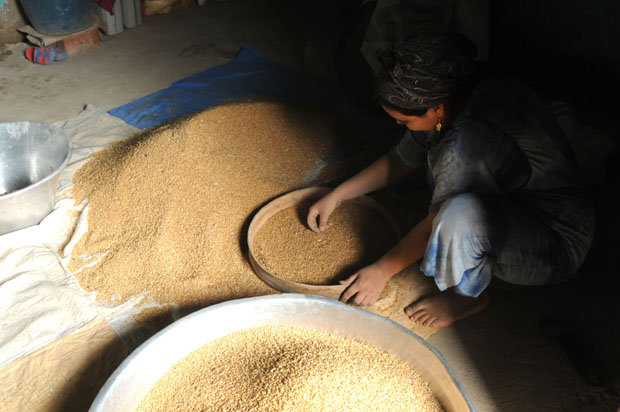 Wheat being prepared for baking bread in Deir Al-Maymun.[/caption]
[caption id="attachment_429686" align="alignnone" width="620"]
Wheat being prepared for baking bread in Deir Al-Maymun.[/caption]
[caption id="attachment_429686" align="alignnone" width="620"]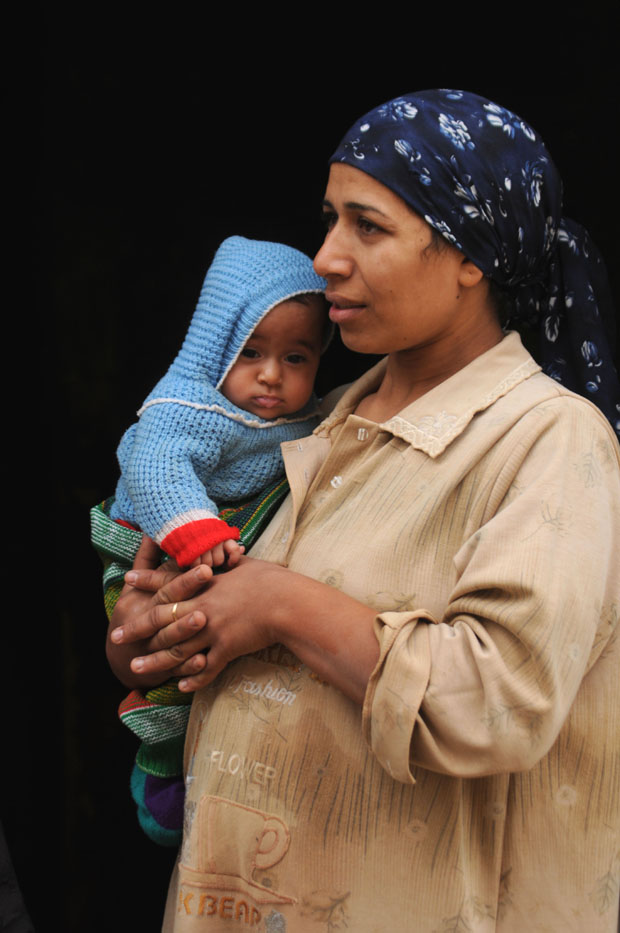 A mother with her baby in Deir Al-Maymun.[/caption]
A mother with her baby in Deir Al-Maymun.[/caption]
The Saint Antony church is at the center of the village, alongside the church of Saint Mercurius, which locals believe to be the oldest church structure in the world.
[caption id="attachment_429684" align="alignnone" width="620"]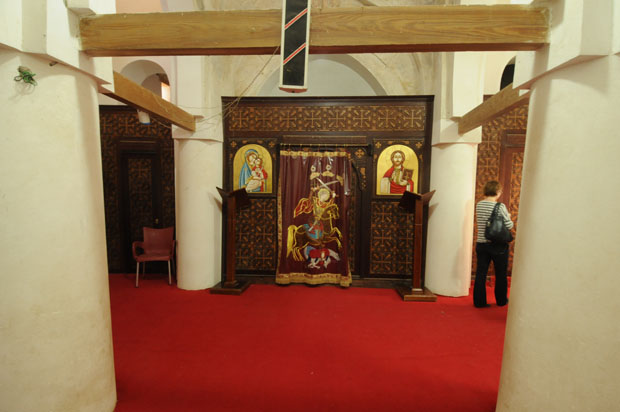 The Church of Saint Mercurius in the village of Deir al-Maymun served as the seat of the Coptic Orthodox Pope of Alexandria from 1300 to 1500, and still has its original foundation intact.[/caption]
[caption id="attachment_429696" align="alignnone" width="620"]
The Church of Saint Mercurius in the village of Deir al-Maymun served as the seat of the Coptic Orthodox Pope of Alexandria from 1300 to 1500, and still has its original foundation intact.[/caption]
[caption id="attachment_429696" align="alignnone" width="620"]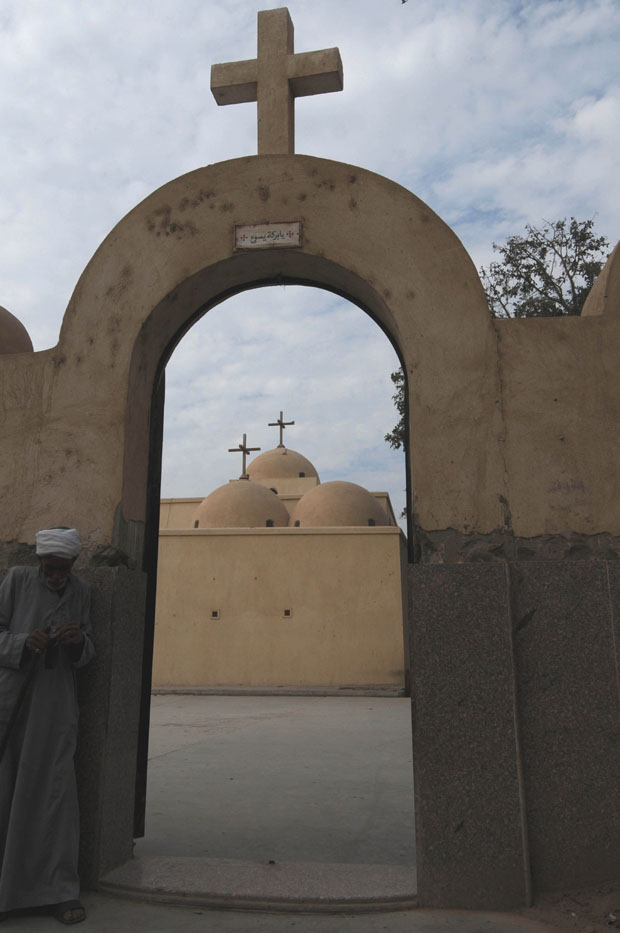 The entrance to the Saint Antony church.[/caption]
[caption id="attachment_429693" align="alignnone" width="620"]
The entrance to the Saint Antony church.[/caption]
[caption id="attachment_429693" align="alignnone" width="620"]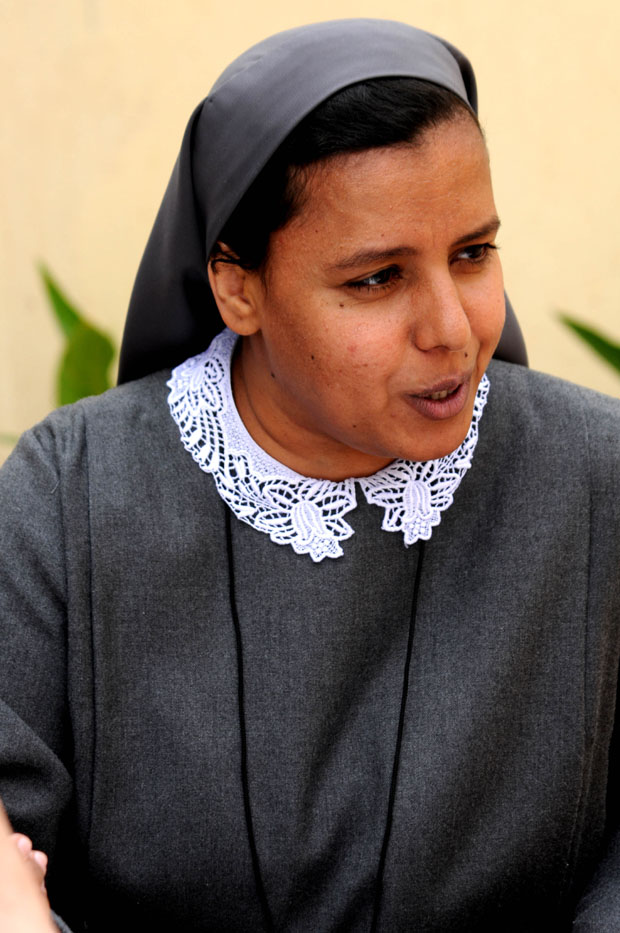 A nun in Deir Al-Maymun.[/caption]
A nun in Deir Al-Maymun.[/caption]
The village of Atfih lies approximately 80 km south of Cairo on the east bank of the Nile. There, the local historic church of Deir Al-Rasul (Monastery of the Apostle) can be found. The church is said to house the holy site where Saint Paul the Simple sheltered himself from the outside world in the late 3rd century.
[caption id="attachment_429695" align="alignnone" width="620"]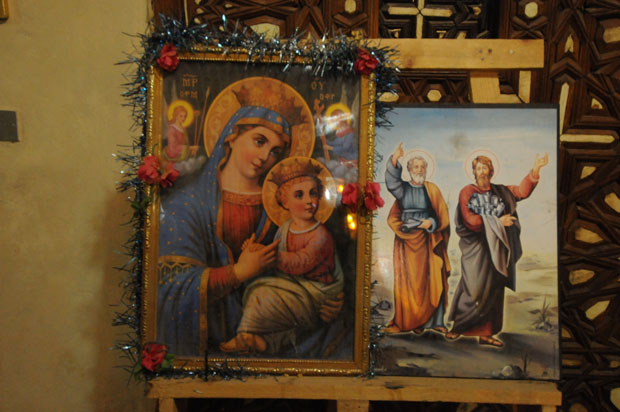 Deir al-Rasul church houses historic relics and icons, including those of Saint Paul the Simple, and Martyr Mina the Miraculous and the internationally-known Saint George.[/caption]
[caption id="attachment_429694" align="alignnone" width="620"]
Deir al-Rasul church houses historic relics and icons, including those of Saint Paul the Simple, and Martyr Mina the Miraculous and the internationally-known Saint George.[/caption]
[caption id="attachment_429694" align="alignnone" width="620"]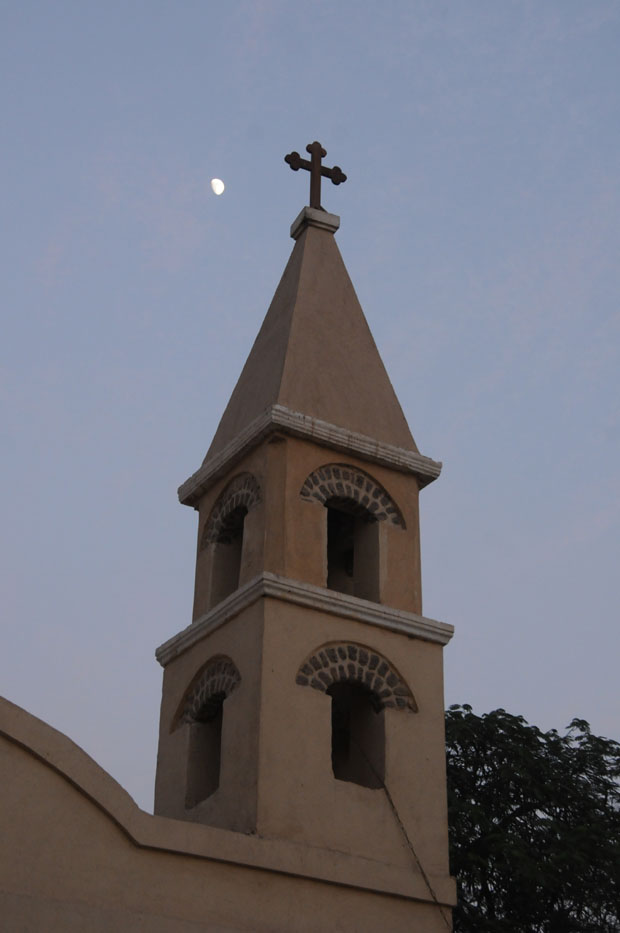 It was only in 2009 that the Ministry of Culture finally contracted an engineer to renovate Deir al-Rasul Church after it was damaged in the 1992 earthquake.[/caption]
It was only in 2009 that the Ministry of Culture finally contracted an engineer to renovate Deir al-Rasul Church after it was damaged in the 1992 earthquake.[/caption]
The Saint Menas church in New Beni Suef is built in honor of Martyr Minas the Miraculous. The church was built in 1970, but was heavily damaged in the earthquake of 1992 and rebuilt in 2009.
[caption id="attachment_429691" align="alignnone" width="620"]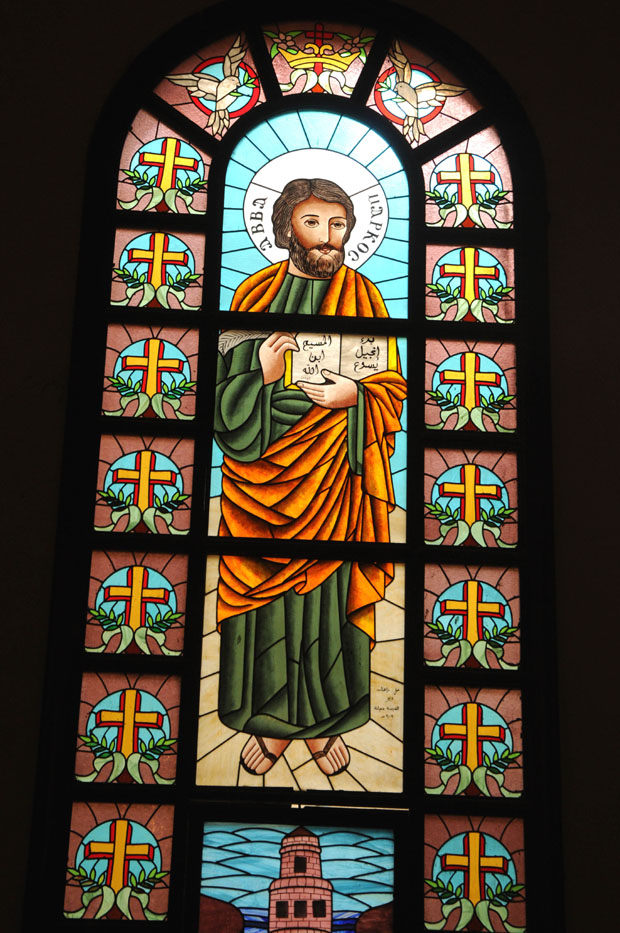 Stained glass windows inside the St. Menas Cathedral in New Beni Suef.[/caption]
[caption id="attachment_429692" align="alignnone" width="620"]
Stained glass windows inside the St. Menas Cathedral in New Beni Suef.[/caption]
[caption id="attachment_429692" align="alignnone" width="620"]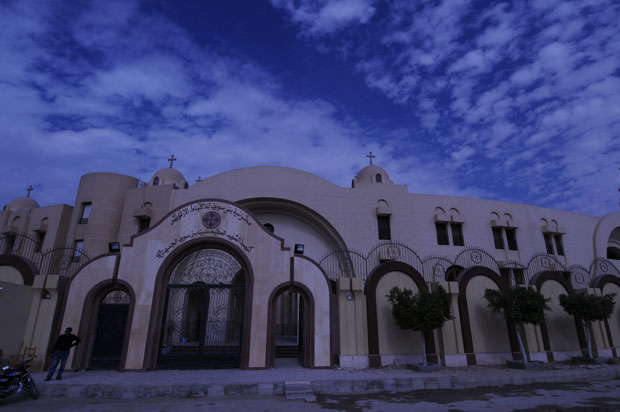 St. Menas Cathedral in New Beni Suef.[/caption]
St. Menas Cathedral in New Beni Suef.[/caption]
Over 30 people of various nationalities embarked on a trip to visit villages near Cairo with a strong Christian heritage, most notably the villages of Deir al-Maymun and Atfih in Beni Suef. Participants were offered insight into the rich Coptic history of Egypt and the Coptic villagers who still hold steadfastly to their traditions and religion. Hosted by the Center for Arab West Understanding and the Arab West Report, the trip featured Cairo-based Dutch sociologist Kees Hulsman, who guided the travelers and pointed out the history and significance of the churches.
Comments
Leave a Comment